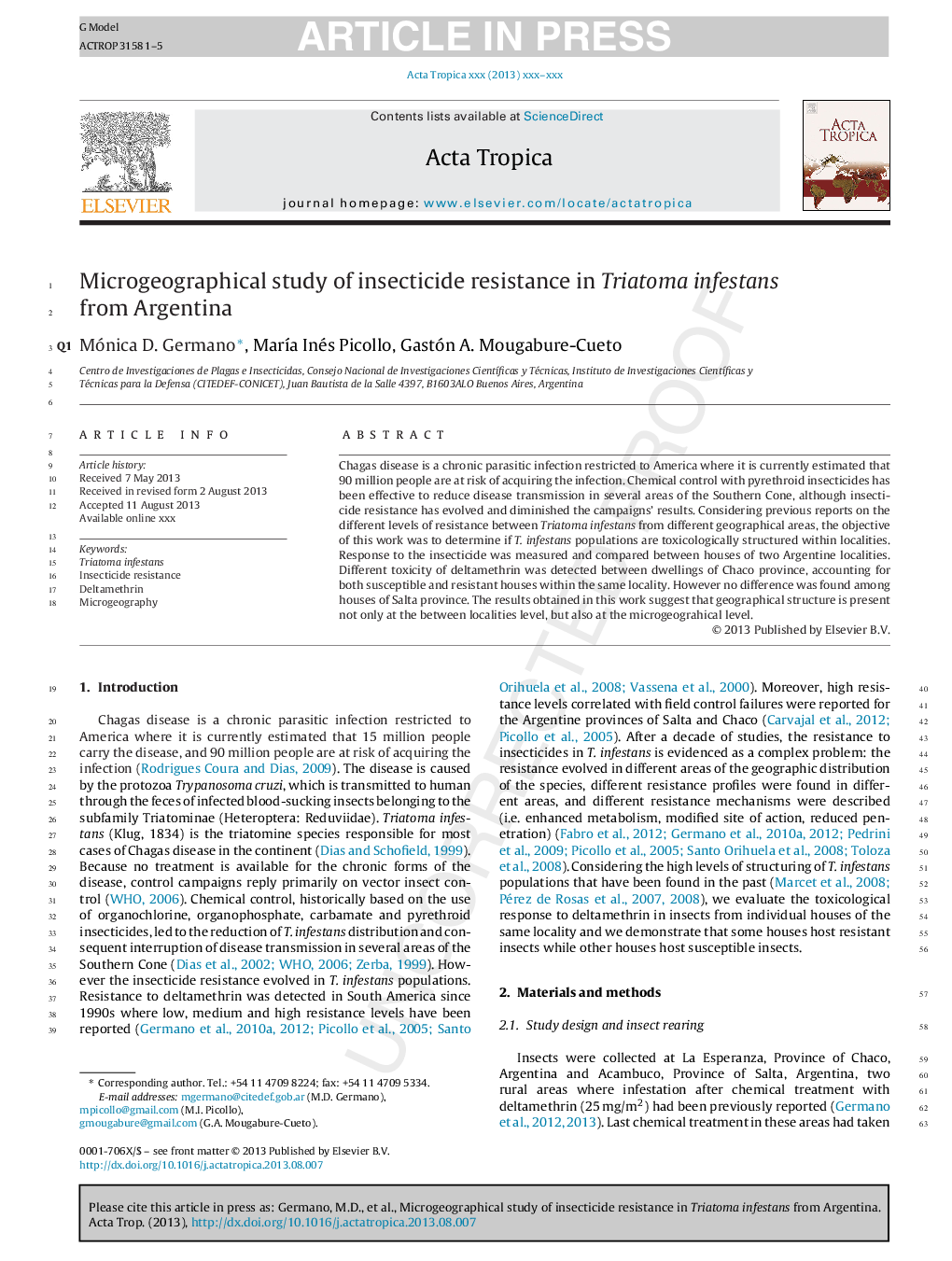| Article ID | Journal | Published Year | Pages | File Type |
|---|---|---|---|---|
| 6127645 | Acta Tropica | 2013 | 5 Pages |
Abstract
Chagas disease is a chronic parasitic infection restricted to America where it is currently estimated that 90 million people are at risk of acquiring the infection. Chemical control with pyrethroid insecticides has been effective to reduce disease transmission in several areas of the Southern Cone, although insecticide resistance has evolved and diminished the campaigns' results. Considering previous reports on the different levels of resistance between Triatoma infestans from different geographical areas, the objective of this work was to determine if T. infestans populations are toxicologically structured within localities. Response to the insecticide was measured and compared between houses of two Argentine localities. Different toxicity of deltamethrin was detected between dwellings of Chaco province, accounting for both susceptible and resistant houses within the same locality. However no difference was found among houses of Salta province. The results obtained in this work suggest that geographical structure is present not only at the between localities level, but also at the microgeograhical level.
Related Topics
Life Sciences
Immunology and Microbiology
Parasitology
Authors
Mónica D. Germano, MarÃa Inés Picollo, Gastón A. Mougabure-Cueto,
